#Sapa inca
Text
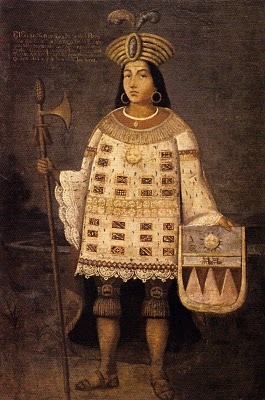
24 September 1572 – Túpac Amaru (born 1545) , the last Sapa Inka and monarch of the small independent Neo-Inca State in Vilcabamba, was beheaded by order of the spanish fifth Viceroy of Peru, Francisco de Toledo. The King of Spain, Philip II, disapproved of the execution.
#september 24#sapa inca#túpac amaru#peru#history#geschichte#histoire#historical#historia#1572#francisco de toledo#vilcabamba#neo inca#inca#inka#philip ii of spain#conquista#imperialism#conquistador#tupaq amaru#thupaq amaru#topa amaru#túpac amaro#thupa amaru#thupa amaro#tupaq amaro#topa amaro#thupaq amaro
20 notes
·
View notes
Text
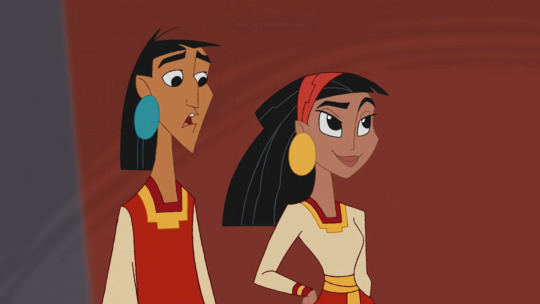

Kuzco and Malina in season 1: episode 6
#Native american characters#Andean indigenous#inca#sapa inca#brown characters#south american indigenous#characters of color#ndn tumblr#both are cuties#the emporer's new school#Kuzco#Malina#the emporer's new groove#andean native#screenshots
27 notes
·
View notes
Text
Belle présentation de toute la gamme Sapa Inca par Imaginalud TV
Belle présentation de toute la gamme Sapa Inca par Imaginalud TV: le livre de base, l’écran avec son aide de jeu pour les joueurs, le Tahuantinsuyu (description de l’univers de jeu: l’Empire Inca et les Enclaves Espagnoles puis Missions dans le Tahuantinsuyu (recueil de 9 scénarios) ! :O ❤
Et c’est la vraie vie… content de voir que Sapa Inca plait ! Cette fois avec une nouvelle vidéo qui est une…

View On WordPress
0 notes
Text






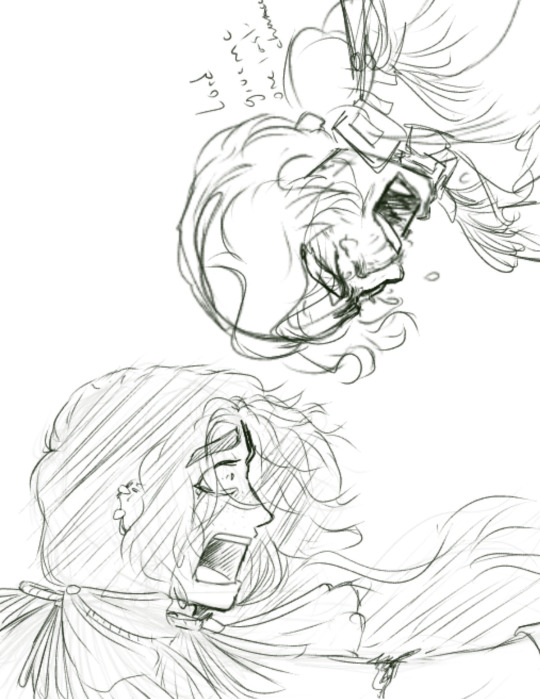
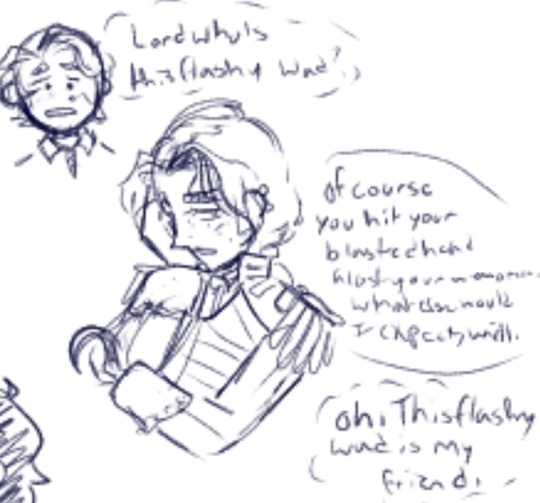


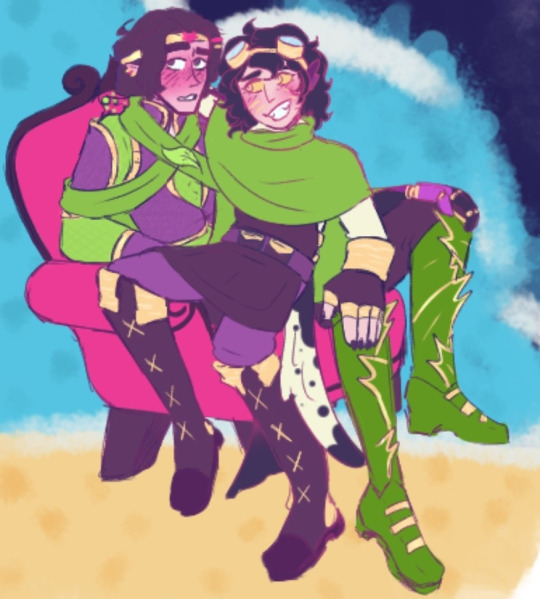



Art dump because it was getting to be a lot and I needed to post it before I had like. 30 whole spreads to post. I need to stop drawing so much dear lord.
Support me on Kofi <3
#Feeling so normal (lying)#FOR some reason I'm actually vibing so hard with Ferris x Forthing like it's so funny to me#dnd au art is in here.. bfs#dnd au#henry ferris#lieutenant forthing#john granby#micah warren#tenzing tharkay#arthur hammond#augustine little#happy accidents#granby/little#william laurence#the sapa inca is there#temeraire#iskierka#my art#I'm so sorry for flooding the tags these characters are just eating my brain they are like parasites#hc that Ferris has rosacea
21 notes
·
View notes
Text

Statue of Pachacutec, Aguas Calientes, Peru: Pachacuti Inca Yupanqui, also called Pachacútec (Quechua: Pachakutiy Inka Yupanki), was the ninth Sapa Inca (before 1438 – 1471) of the Kingdom of Cusco which he transformed into the Inca Empire (Quechua: Tawantinsuyu). Most archaeologists now believe that the famous Inca site of Machu Picchu was built as an estate for Pachacuti. Wikipedia
59 notes
·
View notes
Text
Imagine having to come out to Will Laurence, of all people, because otherwise your useless reptile of a dragon (affectionate) will marry you off to the Sapa Inca, I think I would rather die
#temeraire#they are both SO UNCOMFORTABLE#poor granby. he is much-tried#and hilariously this is barely in the top 5 of gayest moments in this series
101 notes
·
View notes
Text
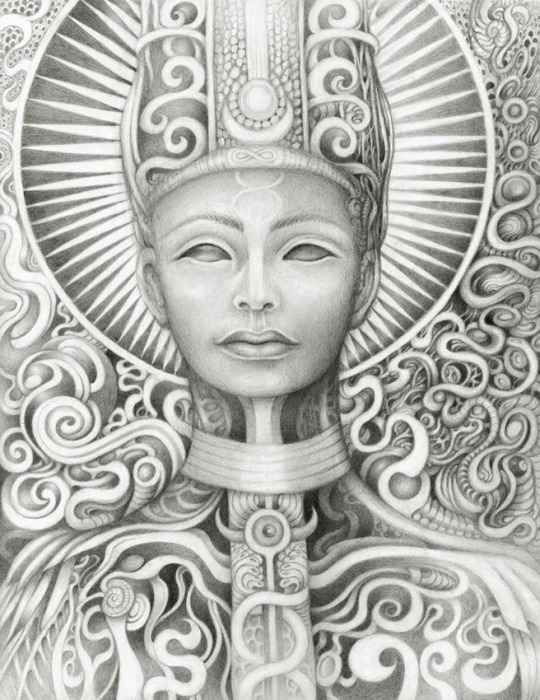
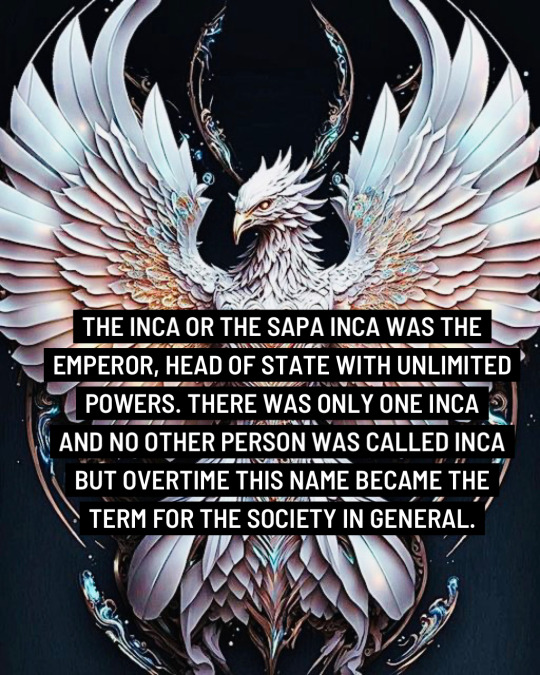
He who knows me best…
In honor of my heritage I give thanks and remembrance to my “Sapa Inca” the head and not the tail. From the first Sapa until the last, we do remember.
The “Sapa Inca” was always a revered part of Inca and Peruvian 🇵🇪 culture even upon death the “Sapa Inca” remained a part of the household and their well preserved bodies were brought out for important occasions.


18 notes
·
View notes
Text
I NEED ADVICE!
This is my third pass at this character and this is where I’m at so far!
In case you didn’t see my previous posts, I’m writing a comic based in post-apocalyptic Peru. It’ll have major elements of the Inca empire mixed with modern elements but also more cyberpunk elements.
I know it’s a lot but I’m convinced it’ll create something unique and really interesting.
The man below will be the leader of the last surviving peoples and father of one of the main characters!
Keep in mind that their society isn’t struggling, they’re thriving. The nuclear explosion happened years prior and they’ve already rebuilt while taking inspiration from the Incan empire to run things.
So this man is their Sapa Inca, or their King. He’s meant to represent traditionalism but also the control over machinery. As he believes cybernetics and hardware are merely tools for people to use.
Just thought I should give a bit more of a backstory!
With this pass of the design I added far more details and cybernetics to him but I’m really more sure if it’s too much?
Someone said his face looked too busy and I do see that but I think I’ve been staring at it for too long.

Also, all of the textiles and patterns I’ve drawn are really just placeholders as I can only do so small with my markers and the comic will 100% be done digitally, so I’ll have far better control and fully plan on either finding or creating specific brushes for all the patterning.
Most circles in his design will actually be glowing stones that’ll shift in hue depending on the tone of the scene he’s in.
There’s some parts I don’t like about his design like his boot and I’m not fully sold on the design of the cybernetics as I’ve seen some more sleeker designs that I might use instead. But I’m really not sure.
If anyone has any advice or ideas or even critiques them I’d love to hear them!
Being culturally accurate is also extremely important to me, so if anyone who is more versed in that department has any advice or criticisms then please let me know.
Especially if anything is offensive.
@andeanbeauties
@thebeardedladyofthelake
@batmeringue
Sorry for the tagging but you all commented on the last part and I thought you might want to see the next one! There was also others I wanted to tag but for some reason tumblr wasn’t letting me! So I’m so sorry for that!!
#comic#character design#character design advice#inca#peru#peruvian#peruvian character#cyberpunk#andes mountains#andespeople#andean#andeanpeople#critique welcome#media critique#literary critique#character critique#character concept#my characters#character illustration#character art#character reference#original character#oc artwork#my oc art#oc art#oc artist#original cartoon#comic writer#my comic#comics
32 notes
·
View notes
Text
Though a powerful monarch, the Sapa Inca (“Unique Lord”) did not rule alone. He was counseled by mummies of his immortal ancestors and their other descendants, who all joined him in Cuzco’s most solemn ceremonies and drunken revelry. [...]
Pedro Sancho and Pedro Pizarro, both members of the original expedition, have left us some impressions of the capital (plate 1.1): There is a very beautiful fortress of earth and stone with big windows that look over the city [of Cuzco] and make it appear more beautiful … [The stones] are as big as pieces of mountains or crags … The Spaniards who see them say that neither the bridge of Segovia nor other constructions of Hercules or the Romans are as magnificent as this. (Sancho 1917: 193–4) Most of the people [of Cuzco] served the dead, I have heard it said, who they daily brought out to the main square, setting them down in a ring, each one according to his age, and there the male and female attendants ate and drank. The attendants made fires for each of the dead in front of them … and lighting [them], burned everything they had put before them, so that the dead should eat of everything that the living ate. (P. Pizarro 1986: 89–90) [...]
The Incas’ feats seemed all the more fabulous when the conquistadores heard that the realm was only about four generations old. As the Incas explained it, the empire was launched when Pachakuti usurped the throne from his father Wiraqocha Inka and began to annex the peoples around Cuzco. His successes and organizational genius were followed only by those of his son Thupa Inka Yupanki and grandson Wayna Qhapaq, and then by the final dynastic war (table 1.1). [...]
[...] history was kept as oral tradition, supplemented by mnemonic registers. In Cuzco, poet-historians called amauta and knot-record masters called khipu kamayuq (figure 1.2) recited sagas of the royal past at the bidding of the court. The khipu themselves seem to have encoded information about the past in ways that had as much to do with cultural visions of hierarchy, power, and space as with sequences of events. Aristocrats also memorized epic poems, some of which they recited to the Spaniards. Not surprisingly, the descendants of different rulers called up versions of the past that favored their own ancestors, [...]
Cieza (1967: 32) explained things this way: and if among the kings one turned out indolent, a coward, given to vices and a homebody without enlarging the domain of his empire, it was ordered that of such [kings] there be little remembrance or almost none at all; and they attended to this so closely that if one [king] was found [in the histories] it was so as not to forget his name and the succession; but in the rest they remained silent, without singing the songs [as they did] of the others who were good and valiant. [...]
Many resolved the problem by favoring information provided by their oldest and most aristocratic witnesses and by dismissing reports by common Indians. Those circumstances mean that the documentary history of the Incas has been filtered through competing native views, translators, scribes, conflicting mores, and differing notions of the nature of the past. [...]
Terence D'Altroy. The Incas. Second edition.
14 notes
·
View notes
Text
Flag of the Inca Empire

This is the flag of the Inca Empire. It comes from a world where the Inca were able to defeat Pizarro and his troops, and resisted Spanish conquest. The naturally mountainous terrain of the Andes helped give the Inca a considerable boost in self-defense against other European powers. The Inca played the various European powers off of each other to preserve their independence. The Inca initially considered a policy of isolationism, but this would prove untenable. Though, initially, the Inca limited their interactions with the Europeans as much as possible.
As time went on, the Inca began to study and replicate European technology and ideas. The first major change being the introduction of gunpowder weaponry, and the establishment of permeant standing army. The Inca also established a formal written language; with its alphabet largely based on the Latin Alphabet, but with some unique flourishes. The Inca had been ravaged by smallpox, and other Europeans diseases, though not quite to the extent they were in our world. Naturally, the Inca sought out the vaccine for smallpox as soon as it became available in the 18th Century.
The 19th Century saw the next major wave of reforms. The Incan government reformed into a parliamentary democracy, with limits set on the Sapa Inca’s powers. The first stages of industrialization also began at this time. The Inca adopted Western styles of clothing, but mixed in their own designs and color choices. Indeed, to this day, the Incan clothing is known for its unique mix of Western and Indigenous designs. However, more traditional style clothing can be found at important events, such as major religious festivals, or the crowning of a new Sapa Inca.
Today, the Inca Empire is a prosperous modern nation. Cusco, the nation capital, is a true global city. It is home to several universities, museums and art galleries, restaurants, and temples that are the envy of the world. The Quechua people are the largest ethnic group within the empire. However, the empire is home to many other ethnic groups including, among others, Aymara, Mapuche, Wayuu, Het, Polynesians, and even Amazonian tribes. The Inca Empire also receives many immigrants from around the world.
Incan citizens enjoy a very generous social safety net. Government-funded healthcare is provided to all citizens, though private insurance also exists. The Department of Employment provides jobs to all citizens who find themselves unemployed. In the event that a citizen cannot fulfill any available jobs, they are instead given a welfare payment until new jobs become available. The Department of Culture helps provide funding for the arts. Some citizens, of course, cannot attend performances of the arts due to their financial circumstances. In this case, they can apply for free vouchers from the Department of Culture. This all means that most Inca citizens have fairly high taxes, but most consider the trade-off worth it.
The flag includes a stylized depiction of the sun god Inti. The Inca still largely follow their traditional religion; though secularism is on the rise. The blue symbolizes how the same blue sky stretches over all parts of the empire. In the corners of the flag are four chakana; a common geometric shape found in art across various Andes Civilizations. They are in the four corners of the flag in reference to the Inca Empire’s official name, Tawantinsuyu, which means Land of the Four Corners.
Link to the original flag on my blog: https://drakoniandgriffalco.blogspot.com/2022/04/flag-of-inca-empire.html?m=0
#alternate history#alternate history flag#alternate history flags#flag#flags#Inca Empire#Inca#Incan Empire#Tawantinsuyu#Peru#bolivia#ecuador#Colombia#Chile#Argentina#South America#Flag of the Inca Empire#vexillology#quechua#indigenous#indigenous people#alt history
12 notes
·
View notes
Text
Though the youngest son of the 8th Inca Sapa, Pachacuti became the emperor of the Inca and its empire through bravery and ruthless action. It is said that Machu Picchu was built as his personal estate!
34 notes
·
View notes
Text




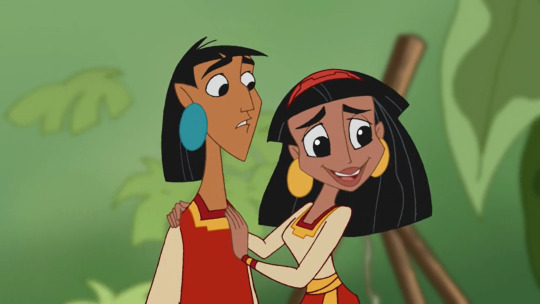
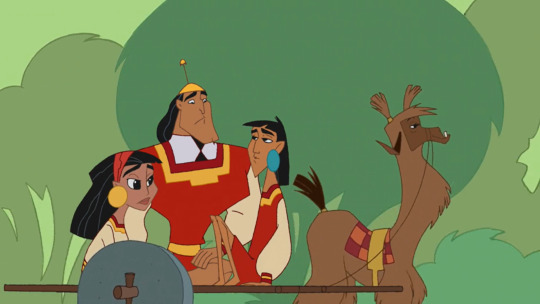
Kuzco, Kronk, and Malina in season 1: episode 7
Also, Kuzco isn’t that bad of a doodler
#The emporer's new school#Andean characters#Native american characters#andean native#Andean indigenous#Kuzco#Kronk#Malina#tens#Teng#Brown characters#bipoc#characters of color#disney#the emporer's new groove#llama#andean region#inca#Sapa inca#Quechua#Kichwa#Aymara#kronk is a himbo#Kuzco is a bisexual fruity twink#Malina is the Sapphic voice of reason
25 notes
·
View notes
Text
Marion critique Sapa Inca sur sa chaine SMD
Marion critique le JdR Sapa Inca sur sa chaine Suck My Dice ! Allez la voir, abonnez-vous et faites-vous votre idée sur Sapa Inca ! :O ❤
Et c’est la vraie vie… avec une nouvelle critique positive de Sapa Inca qui fait plaisir ! D’autant plus en étant un des auteurs aux côtés d’Eric Dubourg, Pascal Broxolle et ZeDiak le rôliste pour Florent Moragas d’Odonata Éditions ! :O ❤
Source:…
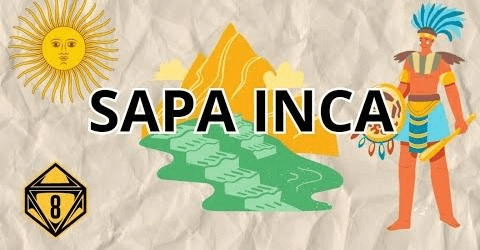
View On WordPress
0 notes
Text
i hate how historical non-european figures' titles get changed to eurocentric ones. like atahualpa wasnt the "king" or "emperor" of tawantinsuyu he was the sapa inca. it may not seem like a big deal and its not so much but. its like calling olaf scholz the president of germany. functionally very similar but extraordinarily incorrect to call him that. if you're just saying the sapa inca is LIKE an emperor for clarification thats perfectly fine who cares. but applying european terminology to non-european will always be annoying and wrong
15 notes
·
View notes
Text
Happy International Lefthanders Day! That’s right, we have a day. And to celebrate, I’m making another special post. All information is from Wikipedia and kinda hard to verify elsewhere (by which I mean other sources seem to be using Wikipedia as a source), so if this turns out to be bogus, I apologize to the native people of the Andes for misrepresenting their culture.
Left-handedness has traditionally gotten a very bad rap in a lot of cultures, but that’s not the case everywhere. The biggest example is among the Inca and their descendents living in the Andes. The Quechua word for left-handed people is Lluq'i, a term of positive associations. Lefties are believed to have special powers, like magic and healing. Lluq'i Yupanki was the third Sapa Inca, and his name translates to “The Glorious Left-Hander.” Today, we are not sinister. We are not gauche. We are Lluq'i
4 notes
·
View notes